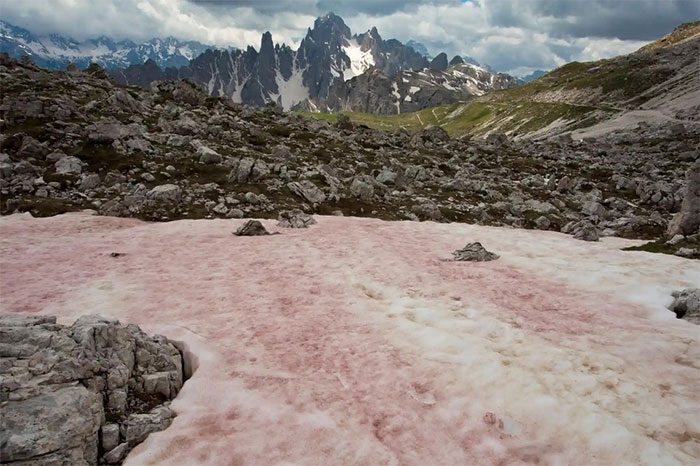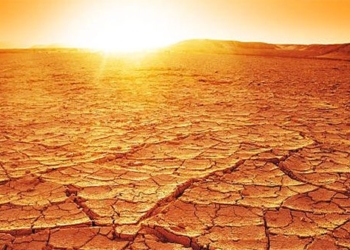The mountains and roads at the border between Utah and Idaho in the United States are covered with snow that has a watermelon-like pink hue.
Experts say that the color-changing snow appears in areas at certain elevations above sea level, under suitable conditions such as the presence of water, sunlight, temperature, and nutrients, according to the Guardian.

Watermelon-colored snow in the US. (Photo: AP).
These appropriate environmental conditions awaken a type of green algae called Chlamydomonas nivalis, which thrives in cold weather. When this algae rises to the surface of the snow, it is exposed to sunlight and ultraviolet rays, causing its color to change in order to absorb radiation and protect against harmful effects.
“They need certain pigments to prevent damage from UV rays, so they produce secondary pigments for protection,” said Scott Hotaling, a biologist at the University of Utah.
“Watermelon snow” and Chlamydomonas nivalis are not harmful to humans. However, scientists warn that snow often contains dust and soil, which may harbor toxic substances.
Experts indicate that the thriving green algae, which cause the snow to change to darker colors, will make the snow surface absorb more light, accelerating the melting of ice and snow.
The phenomenon of “watermelon snow” could lead to faster melting rates, raising concerns about the environmental impacts related to the timing of snowmelt and the existence of glacial shelves where the green algae reside.



















































